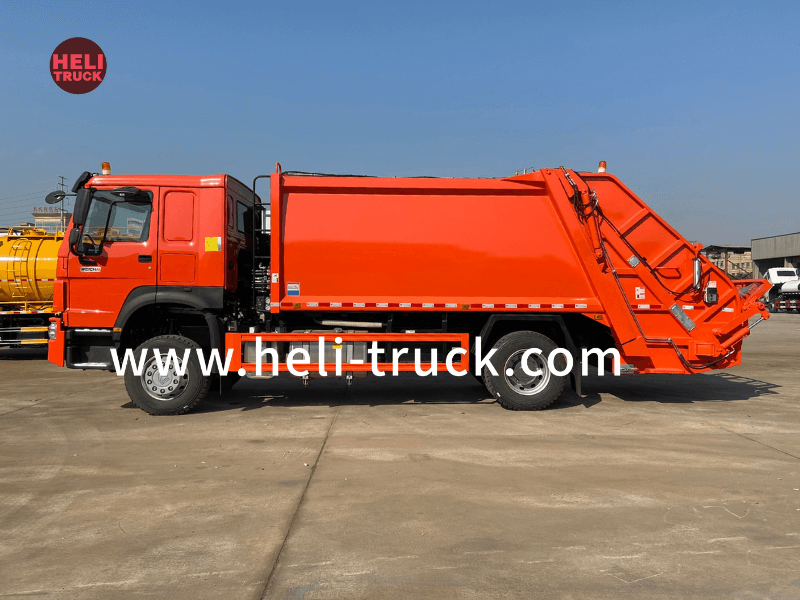Introduction
Work truck cargo management is a crucial aspect of ensuring efficiency, productivity, and safety in various industries, such as construction, transportation, and landscaping. Properly organizing and securing heli truck protects valuable equipment and materials but also enhances the overall performance of work trucks. In this comprehensive guide, we will delve into the importance of effective cargo management, explore different strategies and tools for organizing and securing cargo, and provide practical tips for optimizing work truck functionality.
Importance of Work Truck Cargo Management
Efficient cargo management is essential for maximizing the capabilities of work trucks and streamlining daily operations. Whether transporting construction materials, tools, equipment, or other supplies, proper organization and securement of cargo offer several key benefits:
1. Enhanced Safety: Properly secured cargo reduces the risk of accidents, injuries, and damage to both the cargo and the work truck itself. Loose or improperly secured items can shift during transit, leading to instability, loss of control, and potential hazards on the road.

2. Improved Efficiency: Well-organized cargo allows for easy access to tools and materials, minimizing downtime and increasing productivity. A systematic approach to cargo management ensures that items are stored and arranged in a way that optimizes workflow and reduces the time spent searching for specific items.
3. Protection of Assets: Cargo management helps protect valuable equipment and materials from damage caused by shifting, vibrations, or rough road conditions. Properly securing cargo prevents items from shifting or falling during transit, preserving their integrity and longevity.
4. Regulatory Compliance: Many industries have specific regulations and guidelines regarding the transportation of cargo, including weight restrictions, load distribution requirements, and securement standards. Adhering to these regulations is essential for ensuring compliance and avoiding potential fines or penalties.
Strategies for Organizing and Securing Cargo
Effective cargo management involves a combination of strategic planning, proper equipment, and adherence to best practices. The following strategies can help optimize work truck cargo organization and securement:
1. Utilize Storage Solutions: Invest in storage solutions such as shelving units, drawers, bins, and toolboxes to keep tools and equipment organized and easily accessible. Utilizing vertical space can help maximize storage capacity and prevent clutter.
2. Secure Cargo with Tie-Downs: Use high-quality tie-down straps, bungee cords, and cargo nets to secure items in place and prevent shifting during transit. Anchor points or attachment loops in the truck bed can be used to secure tie-downs and ensure that cargo remains stable.
3. Implement Cargo Dividers: Install cargo dividers or partitions to separate different types of items and prevent them from shifting or mixing during transportation. Dividers can help maintain order, protect fragile items, and optimize storage space.
4. Label and Categorize Items: Clearly label storage containers, bins, and toolboxes to easily identify and locate specific items. Categorizing items based on their use or frequency of access can help streamline workflow and improve efficiency.
5. Consider Modular Storage Systems: Modular storage systems allow for customizable configurations based on the specific needs of the work truck. These systems can be easily reconfigured or expanded to accommodate changing cargo requirements.
6. Use Protective Padding: Use padding, foam inserts, or rubber mats to cushion fragile or delicate items and prevent damage from vibrations or impacts during transit. Protective padding can help maintain the integrity of equipment and materials.
7. Secure Heavy Items First: When loading cargo onto the work truck, start by securing heavy items at the bottom to lower the truck's center of gravity and maintain stability. Lighter items can be placed on top of heavier items to prevent crushing or shifting.
8. Regularly Inspect and Maintain Cargo Securement Equipment: Inspect tie-down straps, bungee cords, and other securement devices regularly to ensure they are in good condition and properly secured. Replace worn or damaged equipment promptly to maintain cargo safety.
Practical Tips for Optimizing Work Truck Functionality
In addition to implementing effective cargo management strategies, there are several practical tips that can help optimize the functionality of work trucks and enhance overall performance:
1. Conduct Regular Maintenance: Keep work trucks well-maintained by scheduling regular inspections, servicing, and repairs. Proper maintenance ensures that the truck is in optimal condition for carrying cargo and reduces the risk of breakdowns or malfunctions.
2. Optimize Load Distribution: Distribute cargo evenly across the truck bed to maintain balance and stability. Uneven loading can cause the truck to be top-heavy, affecting handling and maneuverability.
3. Minimize Unnecessary Weight: Avoid overloading work trucks with excess cargo that is not essential for the job. Excess weight can increase fuel consumption, strain the vehicle's suspension, and compromise safety.
4. Plan Routes and Schedules: Plan routes and schedules efficiently to minimize unnecessary stops, reduce travel time, and maximize productivity. Consider factors such as traffic congestion, road conditions, and delivery locations when planning routes.
5. Train Drivers on Cargo Management: Provide training to drivers on proper cargo management techniques, securement procedures, and safety protocols. Educated drivers are better equipped to handle cargo securely and responsibly.
6. Invest in Technology: Explore technology solutions such as GPS tracking systems, inventory management software, and telematics devices to monitor cargo, track deliveries, and optimize route planning. Technology can streamline operations and improve efficiency.
7. Implement Safety Measures: Prioritize safety by enforcing seat belt use, maintaining proper lighting and visibility, and following traffic laws and regulations. Safety measures should be integrated into daily operations to protect drivers, passengers, and other road users.
Conclusion
Work truck cargo management plays a critical role in ensuring efficiency, productivity, and safety in various industries. By implementing effective strategies for organizing and securing cargo, work truck operators can optimize functionality, protect valuable assets, and streamline daily operations. From utilizing storage solutions and tie-downs to implementing cargo dividers and labeling systems, there are numerous ways to enhance cargo management practices. By following best practices, conducting regular maintenance, and prioritizing safety, work truck operators can maximize the capabilities of their vehicles and achieve optimal performance in their daily operations.
